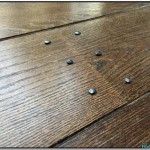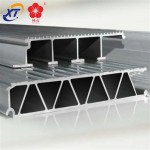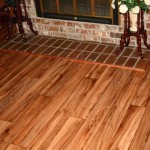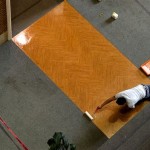Interlocking Wood Tile Flooring Installation Instructions
Interlocking wood tile flooring, also known as modular wood tiles or deck tiles, offers a convenient and aesthetically pleasing flooring solution for both indoor and outdoor spaces. Their ease of installation makes them a popular choice for DIY enthusiasts looking to upgrade patios, balconies, basements, or even sunrooms without the complexity and expense of traditional flooring methods. This article provides a comprehensive guide to installing interlocking wood tile flooring, ensuring a professional-looking finish and long-lasting performance.
Preparing the Subfloor
Proper subfloor preparation is crucial for a successful interlocking wood tile installation. The subfloor must be clean, level, and structurally sound to provide a stable base for the tiles. Failure to adequately prepare the subfloor can lead to unevenness, tile movement, and premature wear.
Cleaning the Subfloor: Begin by thoroughly cleaning the subfloor. This involves removing all debris, dirt, dust, and any existing coatings or adhesives. For outdoor applications, this may involve sweeping, hosing down the area, and allowing sufficient drying time. Indoor applications may require vacuuming, sweeping, and wiping down the surface with a damp mop. Stubborn stains or adhesive residue may require the use of appropriate cleaning solutions specifically designed for the subfloor material.
Leveling the Subfloor: A level subfloor is essential for achieving a flat and even flooring surface. Minor imperfections can often be addressed with self-leveling compound. For concrete subfloors, a self-leveling compound can be poured and spread according to the manufacturer's instructions. Ensure the compound is compatible with the subfloor material and the interlocking wood tiles. For uneven wood subfloors, shimming may be necessary to create a level surface. Use a level and straightedge to identify low spots and insert shims underneath the tiles during installation. It is important to address any significant dips or rises to prevent rocking or instability of the tiles.
Ensuring Structural Soundness: Examine the subfloor for any signs of damage, such as cracks, rot, or loose boards. Repair any structural issues before proceeding with the installation. For concrete subfloors, fill cracks with a concrete patching compound. For wood subfloors, replace rotted or damaged boards. Ensure the subfloor is capable of supporting the weight of the interlocking wood tiles and any anticipated foot traffic or furniture.
Moisture Considerations: Check the moisture content of the subfloor, especially for basement installations or outdoor applications where moisture exposure is prevalent. Use a moisture meter to measure the moisture level in the subfloor. If the moisture content is too high, it can lead to warping or damage to the wood tiles. Allow the subfloor to dry completely before installation or consider installing a moisture barrier to protect the tiles.
Planning the Layout and Cutting Tiles
Careful planning of the layout will minimize the need for excessive cutting and ensure a visually appealing finished product. Accurate measurements and precise cuts are essential for a professional installation.
Measuring the Area: Accurately measure the length and width of the area where the interlocking wood tiles will be installed. Create a sketch of the area, noting any obstacles such as walls, posts, or steps. This sketch will serve as a guide for planning the layout and determining the number of tiles needed.
Determining the Starting Point: Choose a starting point for the installation. In general, it is best to start along a straight edge, such as a wall, and work your way outwards. Consider the visibility of the starting point and how the edges of the tiles will align with the surrounding area. Starting in a less visible corner can allow for slightly imperfect cuts to be less noticeable.
Planning the Tile Pattern: Interlocking wood tiles can be installed in various patterns, such as a straight lay, a checkerboard pattern, or a staggered pattern. Consider the desired aesthetic and the dimensions of the tiles when choosing a pattern. A staggered pattern can help to distribute weight more evenly and minimize the appearance of seams.
Cutting the Tiles: Cutting interlocking wood tiles may be necessary to fit the perimeter of the installation area or to navigate around obstacles. Use a saw suitable for cutting wood, such as a circular saw, a jigsaw, or a hand saw. A circular saw is typically the most efficient option for making straight cuts, while a jigsaw is better suited for cutting curved or intricate shapes. Always wear safety glasses and gloves when cutting the tiles. Measure and mark the cut lines accurately before cutting. Ensure the cut is clean and precise. For outdoor applications, consider using a saw with a blade designed for cutting composite materials to prevent splintering.
Leaving Expansion Gaps: Wood expands and contracts with changes in temperature and humidity. When installing interlocking wood tiles, it is essential to leave an expansion gap around the perimeter of the installation area. This gap allows the tiles to expand and contract without putting pressure on the surrounding walls or structures. A typical expansion gap is about ¼ to ½ inch. Consider the potential for temperature and humidity fluctuations in the installation area when determining the appropriate size of the expansion gap.
Installing the Interlocking Wood Tiles
The installation process is relatively straightforward, but attention to detail is necessary to ensure a secure and visually appealing result. Follow the manufacturer’s specific instructions for the particular brand and type of interlocking tiles being used.
Interlocking the Tiles: Most interlocking wood tiles feature a tongue-and-groove or clip system that allows them to be easily connected. Align the edges of the tiles and gently press them together until they snap into place. Ensure the tiles are securely interlocked and that there are no gaps between them. Use a rubber mallet to gently tap the tiles into place if necessary, but avoid excessive force that could damage the interlocking mechanism.
Working in Rows or Columns: Install the tiles in rows or columns, working systematically across the installation area. Continuously check the alignment of the tiles to ensure they are straight and even. Use a level to verify that the tiles are flat and that there are no uneven spots. For larger areas, it may be helpful to use a chalk line to create a straight reference line to guide the installation.
Addressing Obstacles: When encountering obstacles such as posts or pipes, measure and cut the tiles to fit around the obstacle. Use a jigsaw or a similar tool to create the necessary cutouts. Ensure the cutouts are precise and that the tiles fit snugly around the obstacle. Consider using a sealant or caulk to fill any gaps around the obstacle and prevent water from seeping underneath the tiles.
Securing the Perimeter: Once all the tiles are installed, secure the perimeter of the installation area. This may involve installing edging or trim to conceal the expansion gap and create a finished look. Edging can be secured with nails, screws, or adhesive, depending on the material and the application. Choose edging that complements the style and color of the interlocking wood tiles.
Outdoor Installation Considerations: For outdoor installations, consider using a weed barrier fabric underneath the tiles to prevent weeds from growing up through the gaps. Ensure the subfloor is properly sloped to allow for drainage and prevent water from pooling underneath the tiles. Use fasteners that are resistant to corrosion, such as stainless steel or galvanized screws. Consider the potential for sun exposure and choose tiles that are UV-resistant to prevent fading.
Indoor Installation Considerations: For indoor installations, consider using an underlayment to provide cushioning and reduce noise. Ensure the tiles are acclimated to the room's temperature and humidity before installation. Pay attention to the transition between the interlocking wood tiles and other flooring surfaces. Use transition strips to create a smooth and seamless transition.
By following these instructions carefully, a successful and aesthetically pleasing interlocking wood tile flooring installation can be achieved. Regular maintenance, such as sweeping and occasional cleaning, will help to prolong the life of the flooring and keep it looking its best.

Step By Installation Guide For Wood Floor Tiles

Yaheetech 12 In X Interlocking Patio Deck Tiles Pack Of 27 Dyj3170001

Karl Home 1 Ft X Wood Composite Deck Tile In Brown 27 Per Case K1g61000128 The Depot

Burlywood Interlocking Flooring Tiles Set Of 10 Hkxsc Sauna

Yaheetech 12 X Fir Wood Flooring Tiles 11sq Ft Coverage Area 11 Pieces Brown

Yaheetech 12 In X Fir Wood Flooring Tiles Plastic Interlocking Pack Of 27 Dy5wvm0001 The Home Depot

How To Install Deck Tiles For A Quick And Easy Patio

How To Install Lock Engineered Hardwood Flooring

How Do You Install Deck Tile S Over Gravel

Deck Tile Connectors Fastener System Hardwood
Related Posts








